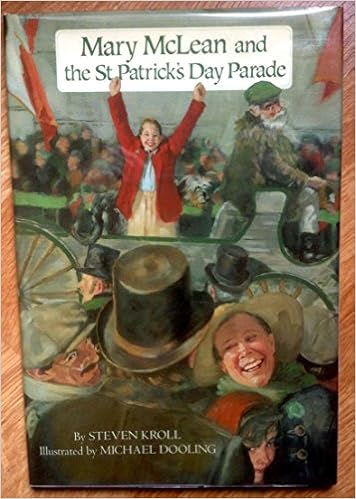St. Patrick's Day
This year to help celebrate St. Patrick's Day I decided to spend some time researching my grandmother's Wilson line - the line that extends into Ireland. I had always supposed that my great-grandparents came to America because of the Great Potato Famine, but this year I learned/realized that wasn't the case. However, I'm still amazed at those who did immigrate during that time, and I loved learning a little of their history included at the back of this children's book.


Author's Note
While all the characters and events in this story have been made up, they are based - with the exception of the leprechaun, of course - on life as it was lived by Irish immigrants in New York City in the 1850s.
Under British rule, the potato had been Ireland's principal crop. Between 1845 and 1849, a blight that spread from America caused the Great Potato Famine. The effects of the famine lasted until 1855. During that time, more than a million Irish fled to American shores. Many settled on James and Pike streets in lower Manhattan, streets that today are part of an industrial and financial district.
No one knows when the first St. Patrick's Day parade took place in America, but by the 1850s there was one in most major cities. The biggest and boldest was always in new York. The parades are part of the joyful side of a holiday that is at once festive and religious and demonstrates the pride of the Irish while celebrating the patron saint of Ireland.
Saint Patrick himself was born in the British Isles, probably near the modern city of Dumbarton, Scotland, around 385 A.D. The Roman Empire had conquered Great Britain three centuries before, and Saint Patrick's father, Calpurnius, held an important position with the Roman government. When Patrick was sixteen, he was kidnapped and sold into slavery in Ireland. Six years later he escaped and devoted himself to God. Eventually, as a bishop, he returned to convert the citizens of Ireland to Christianity. (It is said that he used the three-leaved shamrock, symbol of the green of Ireland, to teach the Trinity.)
The day that honors Saint Patrick is not his birthday but the day he died [which was around 460]. The many myths that surround him help make his celebration even more colorful. Not even a leprechaun - that solitary, bad-tempered, shoemaking Irish fairy - could quarrel with that.
Steven Kroll 1991
If you're interested in learning more history, go here - Irish Potato Famine.

Comments
Post a Comment